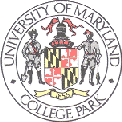Projects of the
Experimental
Software Engineering Group at the University of Maryland

|
Technology Transfer (2)
|
Approach
|
Protocol studies were made within NASA by interviewing several software
engineering experts at various NASA centers in order to understand
how new technology was investigated, evaluated, and inserted in their
organization. Data from organizations such as the Software Engineering
Laboratory was used to quantify some of these protocol studies.
A model of technology insertion is being developed as a way to organize
these approaches into a consistent model.
|
Validation Strategy
|
This project has goals similar to the Experimental
designs study that is being conducted with the
Information Technology Laboratory of
NIST. In that study, other industrial organizations
are being evaluated as to how they insert new technology. The results of
that study will be merged with this NASA-based study in order to
develop a general model of technology transition.
|
Project Status
| Inactive - Most efforts on technology transfer are being
conducted as part of the Experimental Designs study
|
Results
|
The initial NASA study indicated that technoloigy transfer is not an event but a
process. Rather than a single experiment to evaluate a new technology,
using new technology often requires 3 or 4 prototype experiments, course
training, and applied research that can often span 2 to 4 years in a single
organization.
The concepts of process horizon and technological drift have been defined in
a formal model of technology insertion. These need to be applied in real
environments in order to determine if we can apply a quantitative value on
these concepts.
|
